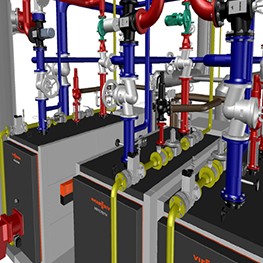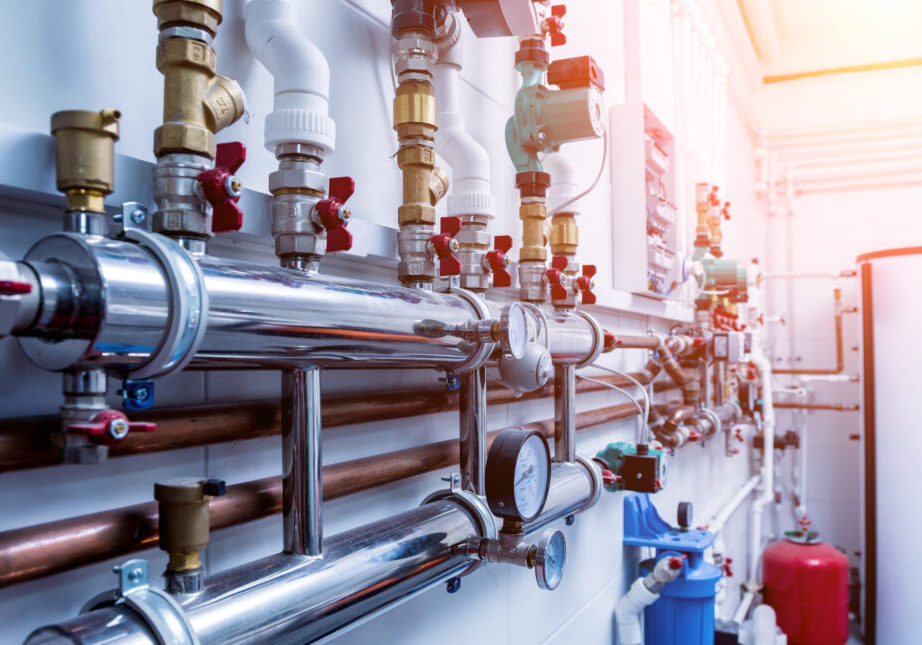Understanding The Structure of Your House's Plumbing System
Understanding The Structure of Your House's Plumbing System
Blog Article
Almost everyone seems to have his or her own idea involving Plumbing Installation 101: All You Need to Know.

Recognizing how your home's pipes system functions is vital for each property owner. From providing tidy water for alcohol consumption, food preparation, and showering to securely getting rid of wastewater, a well-kept pipes system is critical for your family members's health and wellness and convenience. In this detailed overview, we'll check out the elaborate network that comprises your home's plumbing and offer ideas on maintenance, upgrades, and dealing with common concerns.
Intro
Your home's plumbing system is greater than simply a network of pipelines; it's a complex system that ensures you have accessibility to tidy water and reliable wastewater removal. Understanding its components and how they collaborate can help you prevent pricey repair work and ensure whatever runs smoothly.
Basic Parts of a Plumbing System
Pipes and Tubing
At the heart of your plumbing system are the pipelines and tubing that carry water throughout your home. These can be constructed from different products such as copper, PVC, or PEX, each with its benefits in regards to resilience and cost-effectiveness.
Fixtures: Sinks, Toilets, Showers, and so on.
Components like sinks, toilets, showers, and bath tubs are where water is utilized in your house. Recognizing exactly how these fixtures connect to the pipes system aids in diagnosing issues and preparing upgrades.
Valves and Shut-off Points
Valves regulate the circulation of water in your pipes system. Shut-off shutoffs are critical throughout emergency situations or when you require to make repair services, enabling you to separate parts of the system without interrupting water circulation to the entire house.
Water System
Main Water Line
The major water line links your home to the municipal water supply or a personal well. It's where water enters your home and is distributed to numerous fixtures.
Water Meter and Stress Regulatory Authority
The water meter measures your water use, while a pressure regulator makes certain that water flows at a secure pressure throughout your home's plumbing system, preventing damage to pipelines and components.
Cold Water vs. Warm water Lines
Comprehending the distinction in between cold water lines, which supply water straight from the primary, and warm water lines, which lug warmed water from the water heater, aids in fixing and planning for upgrades.
Water drainage System
Drain Pipes and Traps
Drain pipelines carry wastewater away from sinks, showers, and bathrooms to the drain or septic tank. Traps avoid sewage system gases from entering your home and likewise trap particles that might trigger clogs.
Air flow Pipes
Ventilation pipelines enable air right into the drain system, preventing suction that might reduce water drainage and trigger traps to vacant. Correct ventilation is crucial for preserving the integrity of your pipes system.
Significance of Correct Drain
Ensuring correct drainage stops backups and water damages. Regularly cleansing drains and keeping traps can prevent expensive fixings and prolong the life of your plumbing system.
Water Heating Unit
Sorts Of Water Heaters
Hot water heater can be tankless or conventional tank-style. Tankless heating systems heat water as needed, while tanks save warmed water for instant usage.
Upgrading Your Plumbing System
Factors for Upgrading
Updating to water-efficient components or changing old pipelines can improve water top quality, decrease water costs, and enhance the value of your home.
Modern Plumbing Technologies and Their Advantages
Explore modern technologies like smart leakage detectors, water-saving bathrooms, and energy-efficient water heaters that can conserve money and decrease environmental effect.
Cost Considerations and ROI
Determine the upfront prices versus long-lasting financial savings when thinking about plumbing upgrades. Lots of upgrades pay for themselves with lowered energy costs and fewer repairs.
Exactly How Water Heaters Link to the Pipes System
Understanding exactly how water heaters connect to both the cold water supply and hot water distribution lines assists in detecting issues like inadequate warm water or leakages.
Maintenance Tips for Water Heaters
Frequently purging your hot water heater to remove debris, checking the temperature setups, and evaluating for leaks can extend its lifespan and enhance power performance.
Usual Pipes Concerns
Leakages and Their Reasons
Leakages can occur as a result of aging pipes, loose fittings, or high water pressure. Attending to leakages without delay prevents water damages and mold and mildew development.
Obstructions and Obstructions
Blockages in drains pipes and toilets are often caused by flushing non-flushable products or a build-up of grease and hair. Using drain screens and bearing in mind what decreases your drains can avoid blockages.
Indicators of Pipes Troubles to Expect
Low tide stress, slow drains pipes, foul odors, or abnormally high water costs are indicators of possible pipes issues that must be attended to immediately.
Plumbing Maintenance Tips
Regular Evaluations and Checks
Schedule annual plumbing evaluations to catch problems early. Seek signs of leaks, corrosion, or mineral buildup in faucets and showerheads.
DIY Maintenance Tasks
Easy tasks like cleaning faucet aerators, checking for toilet leaks utilizing color tablet computers, or protecting subjected pipelines in cool environments can stop major plumbing concerns.
When to Call an Expert Plumbing
Know when a plumbing concern calls for expert proficiency. Trying complicated repair services without proper expertise can cause more damages and greater repair work costs.
Tips for Lowering Water Usage
Straightforward practices like fixing leakages quickly, taking shorter showers, and running complete tons of laundry and recipes can save water and lower your energy bills.
Eco-Friendly Pipes Options
Think about sustainable plumbing products like bamboo for flooring, which is durable and green, or recycled glass for counter tops.
Emergency Readiness
Actions to Take During a Plumbing Emergency situation
Know where your shut-off shutoffs lie and how to shut off the water in case of a burst pipe or major leakage.
Relevance of Having Emergency Situation Contacts Convenient
Keep get in touch with details for neighborhood plumbers or emergency services readily available for quick reaction throughout a pipes situation.
Environmental Impact and Preservation
Water-Saving Components and Devices
Mounting low-flow faucets, showerheads, and bathrooms can dramatically decrease water use without giving up performance.
DIY Emergency Fixes (When Appropriate).
Short-lived fixes like making use of air duct tape to spot a dripping pipeline or positioning a bucket under a leaking tap can minimize damage up until a specialist plumbing arrives.
Final thought.
Recognizing the makeup of your home's plumbing system empowers you to maintain it efficiently, conserving money and time on repairs. By complying with routine maintenance routines and staying notified regarding modern-day pipes technologies, you can guarantee your pipes system operates effectively for many years to come.
The Anatomy of Your Home s Plumbing System
Understanding the anatomy of your home s plumbing system is essential for any homeowner. It not only helps in identifying potential issues but also facilitates effective communication with professionals when repairs or upgrades are needed. Your home s plumbing system is more than just pipes and faucets; it s a complex network that ensures the efficient and hygienic flow of water in and out of your house. In this blog, we ll dissect the crucial components of your home s plumbing system. For those in Antelope Valley, Brock Plumbing is your trusted partner for all your plumbing needs, ensuring your system functions smoothly and efficiently.
Water Supply System
Main Water Line: This is where your home s plumbing system begins. The main water line connects your home to the public water supply or a private well. Pipes and Shut-off Valves: Pipes distribute water throughout your home. Shut-off valves are crucial for controlling the flow of water and making repairs without shutting off the entire system. Drainage System
Drain Pipes: These pipes carry waste and water away from sinks, toilets, and showers. Vents: Vents allow sewer gases to escape and help maintain proper pressure in the drainage pipes, ensuring efficient flow of wastewater. Traps: Every fixture has a trap, a U-shaped pipe that holds water and prevents sewer gases from entering your home. The most common is the P-trap under sinks. Fixtures and Appliances
Fixtures and appliances are the most interacted with parts of your plumbing system. They include sinks, toilets, showers, dishwashers, and washing machines. Each fixture and appliance has its own supply and drainage connection, ensuring they receive clean water and can dispose of wastewater effectively.
Water Heating System
Your water heater is a crucial component, providing hot water to various fixtures and appliances in your home. It can be tank-based or tankless, with each type having its own set of advantages and maintenance requirements. Regular maintenance is essential to ensure efficient operation and extend the lifespan of the unit.
Sump Pump
In areas prone to flooding or with high water tables, a sump pump is an essential part of the plumbing system. It s installed in the lowest part of your basement or crawlspace and pumps out water that accumulates, preventing flooding and protecting your home from water damage.
Septic System
Homes that are not connected to a municipal sewer system have a septic system and an underground wastewater treatment structure. Understanding how to maintain your septic system is crucial to prevent backups, odors, and early system failure.
Conclusion
Your home s plumbing system is a complex and essential network, ensuring the efficient and hygienic flow of water in and out of your property. Understanding its key components helps in maintaining it properly and identifying issues before they escalate into major problems. For residents in Antelope Valley, Brock Plumbing is dedicated to providing top-notch services, ensuring that every part of your plumbing system is in perfect working order. Trust our team of professionals to handle all your plumbing needs, ensuring your home remains comfortable, safe, and well-maintained.
https://brockplumbinganddrains.com/blog/the-anatomy-of-your-homes-plumbing-system/

We hope you enjoyed our post on Anatomy of a House: Understanding the Components. Thanks a ton for taking time to read our article post. You should take the time to share this post if you appreciated it. I appreciate your readership.
Learn More Report this page